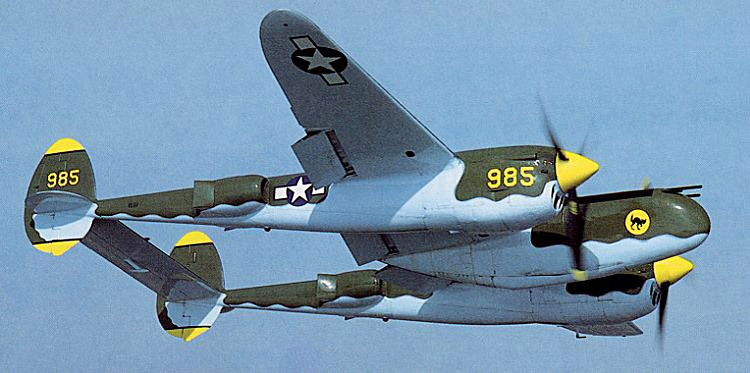

Known for its sleek design and for being one of the most feared air escorts in the Pacific Theater during World War II, the P-38 Lightning was considered ahead of its time.
The Lightning had its first flight in 1939 and would help change America’s history in ways most people don’t know.
Related: This MARSOC recruiting video looks like a Hollywood movie
Check out these ten things you didn’t know about the legendary P-38 Lightning.
1. Its long machine-gun range.
The P-38 had four times the range of other fighter planes of its era. Most planes had their guns mounted atop their wings and shot at a slight angle, which eventually causes rounds to intersect.
The Lightning’s guns, however, were mounted on the nose of the plane, allowing the pilot to shoot straight up to 1000 yards, approximately 800 yards farther than the average fighter.

2. The pilot’s wardrobe.
Early P-38 pilots flew in shirts, shorts, sneakers, and a parachute. That’s all.
3. The nicknames.
Seeing the Lightning coming in hot often scared the sh*t out of the Germans. They once called the plane the fork-tailed devil, while the Japanese dubbed them, two planes, one pilot.
4. The P-38’s unique sound.
Have you seen Star Wars? The sound of the film’s iconic speeder bikes came from mixing the sounds of a P-38 Lightning and a nose-diving P-51 Mustang.
5. Glacier Girl.
On July 15, 1942, six P-38s and two flying fortresses made an emergency landing on an ice cap in Greenland. The crew members were unharmed, and one of the planes was later recovered underneath 250-feet of ice and renamed Glacier Girl.
6. Life as an air racer.
Post-World War II, the warplane sales market boomed. Many P-38s were sold to private collectors who competed in air races.
7. Setting a world record.
In 1939, the XP-38, the Lightning’s prototype, flew from coast to coast of the U.S. in seven hours and two minutes. Although the flight culminated in a crash landing, the pilot survived and the plane was awarded the record time.
8. Operation Vengeance.
Operation Vengeance called for 16 P-38s to ambush Japanese Admiral Yamamoto’s (the mastermind behind the Pearl Harbor attack) transport. The attacks caused Yamamoto’s plane to crash in the jungles of New Guinea, killing him.
9. The best of the best flew P-38s.
Army Air Corps aces Richard Bong, Thomas McGuire, and Charles MacDonald all flew this beautiful plane — all kicking major ass while doing so.
Also Read: That time pancakes helped fight the Japanese in WWII
10. Tail fins.
Many cars built in the 1940s had tail fins as part of their design — all were inspired by the P-38.
Check out World War Wings‘ video below to get the full visual breakdown of this historic warplane for yourself.

(World War Wings | YouTube)
